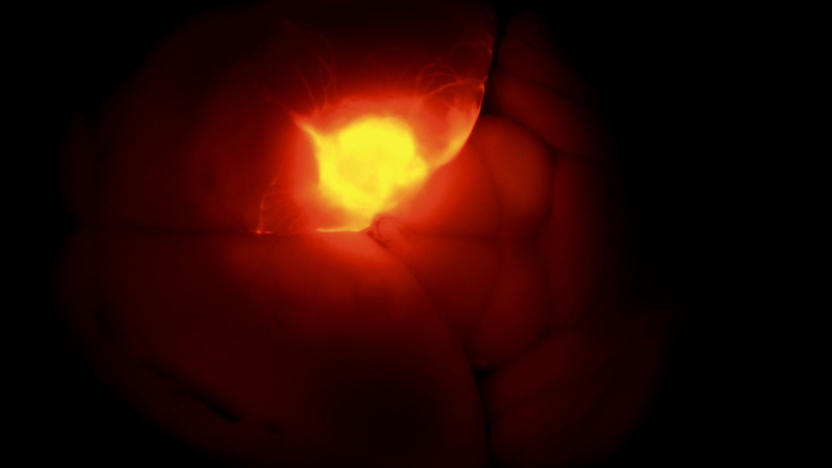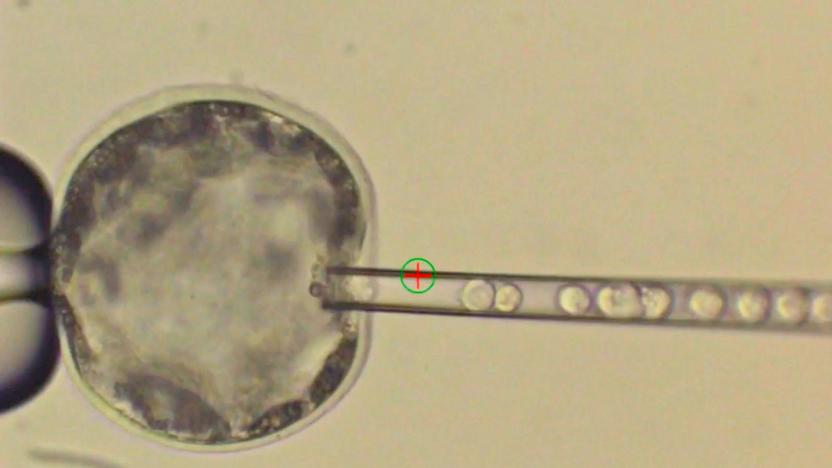SalkInstitute
Latest

Scientists grow human brain tissue in mice
Brain "organoids" made from stem cells are a promising way to study the brain, but the longest they've survived in a petri dish is just five weeks. Researchers from the Salk Institute recently implanted a bean-sized brain organoid into a mouse, and covered it with a transparent window. The material was able to get a blood supply from the mouse and survived for up to 233 days, displaying the same properties and growth as if it were in a newborn. It's a big advance for organoids and could help scientists study and treat mental illness and brain injuries.

Researchers create first viable hybrid human-pig embryo
Researchers have created a viable hybrid part-human, part-pig embryo for the first time in history. According to a study published in the journal Cell Thursday, researchers were able to successfully inject human stem cells into a pig embryo and grow tissue that would form the early stages of human organs like the heart, liver and neurons. Although it's in the very early stages, experts believe the human-pig chimera could one day be used to grow transplantable human organs in farm animals.

Scientists control a worm's brain cells using sound waves
Forget using clunky headsets and implants to control brain cells... one day, you might only need to use sound waves and some chemicals. Salk Institute scientists have found a way to control the brain cells of a tiny nematode worm through ultrasound. All they need to do to trigger activity is add a membrane ion channel to a neuron cell and blast it with ultrasonic waves -- in this experiment, the researchers changed the worm's direction through sound bursts. The approach is not only relatively unintrusive, but can reach deep into the body. You could trigger neural activity without ever hooking up an electrode, even for much larger animals.

